Rutabaga (Brassica napus) Profile
Written by Iris
Aug 05 2021
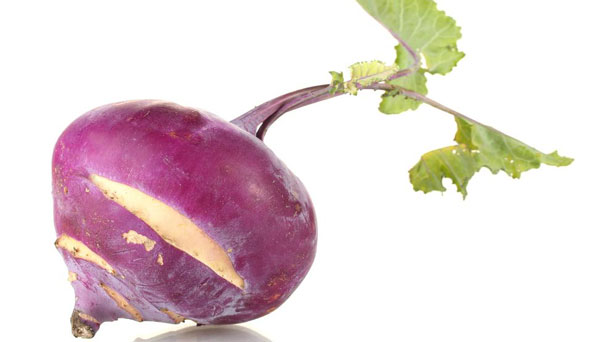
Rutabaga (Brassica napus), the root vegetable of the Brassicaceae family, is cultivated for its fleshy roots and edible leaves. Rutabaga (Brassica napus) most likely originated from a cross between turnips (Brassica rapa, variety rapa) and wild cabbage (Brassica oleracea), and is thought to have been first cultivated in Russia or Scandinavia in the late Middle Ages. Roots are a good source of fiber, vitamin C and potassium and can be eaten raw or pickled, often cooked or mashed with other root vegetables.
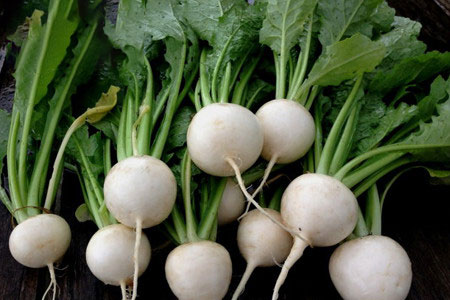
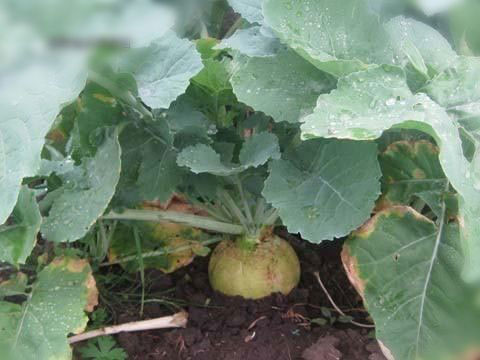
It is best sown in place as this crop does not transplant well. Do not attempt to start rutabaga indoors or in a greenhouse.
For planting depth, follow the instructions on the seed packet. Generally, seeds should be sown at a depth of 1/2 inch, or 1/4 inch for early spring plantings.
Rake and aerate the soil, plant seeds every few inches in rows, and then thin to six inches apart when seedlings are a few inches high. Rows should be spaced two feet apart.
You can also choose to broadcast and rake seeds into a bed of soil and thin later to give each plant 6 inches of room to grow.
Full sized rutabaga roots can grow fairly large, about the size of a grapefruit. Soil needs to be 40 degrees for germination, which can take one to two weeks.
Use a tool used for cutting, preferably the cutter, to cut off a small slice at the bottom of the plant that has the root on it. Put it on top of a cup of water and wait for a few weeks until the elongated roots become visible without stress.
Once those are grown, transplant the rutabaga into the soil and wait a few months until it is fully grown.
Consistently add fresh water because it is fully rooted. Rooting will generally occur within the third or fourth week, but some plants will usually take longer than expected.
When the roots are 1-2 inches long or longer, the cutting is at this point ready to be potted up.
Temperature and Humidity
Rutabagas grow well in a range of temperature and humidity conditions. In dry areas, they are prone to cracking and will not develop their sweetness if they're not given enough water.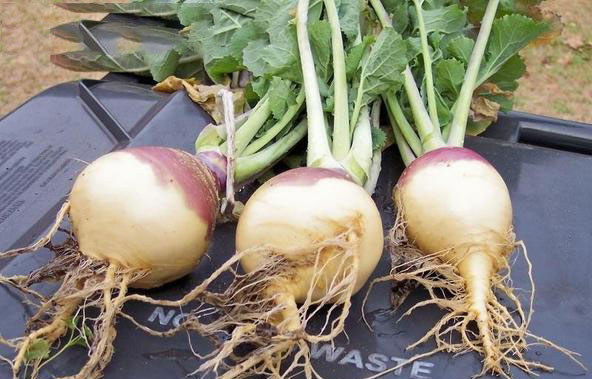
If you harvest the rutabaga after a rain, they should be easy to remove from the soil, assuring that the roots don’t get broken or torn. If harvesting when the soil is firm, use a garden fork to loosen the soil underneath the globe and pull gently. The globes should come to the surface readily.
If you plan to store them in the refrigerator, the rutabagas may sprout after a few weeks. The relative humidity in a modern refrigerator is quite low, so the roots may dry out.
To increase storage life, delay harvest as long as possible. Rutabagas will keep their quality in the ground for weeks. Once you harvest them, remove the tops and the long, thin taproot. Clean dirt off the skin, being careful not to cut or bruise the roots.
Grocery stores usually sell rutabagas with a coating of paraffin wax. This coating keeps them from shriveling on the display shelf. It is not part of long-term storage practice.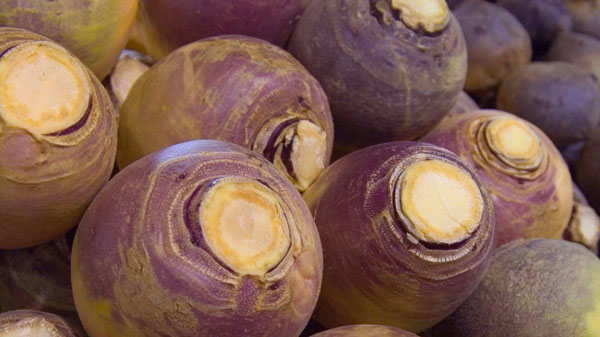
American Purple Top: Popularly grown variety with large bulbs; matures in 90 to 100 days
Laurentian: Heirloom variety with uniform, sweet bulbs; matures in 90 to 120 days
Pike: Similar to ‛Laurentian' but a little hardier; matures in 100 to 120 days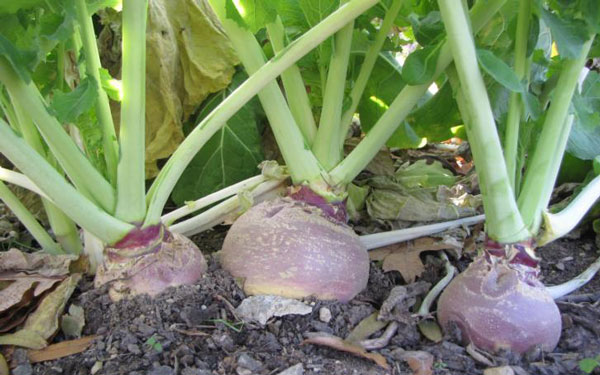
Rutabaga (Brassica napus) PictureRutabaga (Brassica napus) InfoEcological Habits of Rutabaga (Brassica napus)How to Grow and Care for Rutabaga (Brassica napus)Rutabaga (Brassica napus) HarvestRutabaga (Brassica napus) StorageUses of Rutabaga (Brassica napus)Varieties of Rutabaga (Brassica napus)Companion Planting
Rutabaga (Brassica napus) Picture

Rutabaga (Brassica napus) Info
| Botanical Name | Brassica napus (Napobrassica Group) |
| Common Name | Rutabaga, Swedish turnip, swede |
| Plant Type | Root vegetable |
| Mature Size | 12 to 24 inches tall, 9 to 12 inches wide |
| Sun Exposure | Full sun |
| Soil Type | Loamy, well-drained |
| Soil pH | Slightly acidic to neutral (6.0 to 6.5) |
| Bloom Time | Rarely flowers |
Ecological Habits of Rutabaga (Brassica napus)
Rutabaga (Brassica napus) is easy to grow in sunny, organic matter rich, continuously moist, well composted and well drained loam. Tolerate light colors. Soil pH should be between 6 and 6.5. In St. Louis, try Rutabaga as a spring crop (plant seed from March), but it's usually planted for the fall harvest, in large part because the roots require cool temperatures to harvest the best crops, and the roots mature slowly (Rutabaga take four weeks longer than radishes to reach harvest size). For fall harvest, plant in June (100 days before the first fall frost) with rows spaced 18-24 inches apart. Seedlings are thinning to about 6 inches apart in each row. The leaves of sparse plants can be eaten as vegetables. Rutabaga can be harvested in the autumn after light frost (mulch to protect the roots from late autumn low temperatures). Harvest begins when the roots are about 3-5" in diameter. Frost usually sweeten ripe Rutabaga. Rutabaga may remain in the ground until needed, but if left for too long, they will become somewhat woody and lose significantly in quality. Dig out the Rutabaga, remove the top and side roots, and store in the root cellar before freezing badly. In the southern United States (south of USDA District 6), Rutabaga may be planted in the fall and in the winter.
How to Grow and Care for Rutabaga (Brassica napus)
How to Grow Rutabaga (Brassica napus)
- With Rutabaga (Brassica napus) Seeds
It is best sown in place as this crop does not transplant well. Do not attempt to start rutabaga indoors or in a greenhouse.
For planting depth, follow the instructions on the seed packet. Generally, seeds should be sown at a depth of 1/2 inch, or 1/4 inch for early spring plantings.
Rake and aerate the soil, plant seeds every few inches in rows, and then thin to six inches apart when seedlings are a few inches high. Rows should be spaced two feet apart.
You can also choose to broadcast and rake seeds into a bed of soil and thin later to give each plant 6 inches of room to grow.
Full sized rutabaga roots can grow fairly large, about the size of a grapefruit. Soil needs to be 40 degrees for germination, which can take one to two weeks.
- With Rutabaga (Brassica napus) Stem Cuttings
Use a tool used for cutting, preferably the cutter, to cut off a small slice at the bottom of the plant that has the root on it. Put it on top of a cup of water and wait for a few weeks until the elongated roots become visible without stress.
Once those are grown, transplant the rutabaga into the soil and wait a few months until it is fully grown.
Consistently add fresh water because it is fully rooted. Rooting will generally occur within the third or fourth week, but some plants will usually take longer than expected.
When the roots are 1-2 inches long or longer, the cutting is at this point ready to be potted up.
How to Care for Rutabaga (Brassica napus)
- Light
- Soil
- Water
Temperature and Humidity
Rutabagas grow well in a range of temperature and humidity conditions. In dry areas, they are prone to cracking and will not develop their sweetness if they're not given enough water.
- Fertilizer
- Pruning

Rutabaga (Brassica napus) Harvest
Rutabaga mature toward the end of fall. They can be harvested when the globes are 2-3 inches in diameter and will be very tender. The root size is easy to determine – the top tends to grow above the soil level. For optimal taste, wait until they are 4-5 inches round. They will be sweeter if they remain in the ground for the first few frosts. But be sure to harvest your rutabagas before the ground is frozen.If you harvest the rutabaga after a rain, they should be easy to remove from the soil, assuring that the roots don’t get broken or torn. If harvesting when the soil is firm, use a garden fork to loosen the soil underneath the globe and pull gently. The globes should come to the surface readily.
Rutabaga (Brassica napus) Storage
You can keep rutabagas for a long time in root cellar conditions: 32°F to 40°F, and 95% relative humidity. Under root cellar conditions, you can store rutabagas for up to five months. Remember that after a wet growing season, storage life is likely to be shorter.If you plan to store them in the refrigerator, the rutabagas may sprout after a few weeks. The relative humidity in a modern refrigerator is quite low, so the roots may dry out.
To increase storage life, delay harvest as long as possible. Rutabagas will keep their quality in the ground for weeks. Once you harvest them, remove the tops and the long, thin taproot. Clean dirt off the skin, being careful not to cut or bruise the roots.
Grocery stores usually sell rutabagas with a coating of paraffin wax. This coating keeps them from shriveling on the display shelf. It is not part of long-term storage practice.

Uses of Rutabaga (Brassica napus)
The roots are consumed in variety of ways including boiled, mashed, added to stews and soups, baked in pastries and casseroles, and pickled – and the leaves can be eaten as greens. Both the tops and roots of rutabaga are used as livestock feed, primarily for hogs, and the plants can be fed directly after harvest or left in the field for foraging. The roots can stay in the field for up to a year prior to harvesting.Varieties of Rutabaga (Brassica napus)
Altasweet: Mild, less peppery flavor; matures in 90 to 100 daysAmerican Purple Top: Popularly grown variety with large bulbs; matures in 90 to 100 days
Laurentian: Heirloom variety with uniform, sweet bulbs; matures in 90 to 120 days
Pike: Similar to ‛Laurentian' but a little hardier; matures in 100 to 120 days
Rutabaga (Brassica napus) Common Pests/Diseases
Clubroot is a significant problem which not only destroys a crop but will also prevents planting future crops in the same location (spores remain in the soil for 20 years). Plantings are also susceptible to powdery mildew, anthracnose, alternaria, root knot and leaf spot. Aphids, cutworms, loopers, flea beetles, root maggots, and wireworms are potential insect problems.
Companion Planting
Rutabagas have been known to grow well after or with onions, peas or beans. And according to Louise Riotte in her classic book Carrots Love Tomatoes (Storey Publishing, 1998), hairy vetch seems to make a good companion for the turnip family.
Latest Updated
- Benefits of Bugleweed - 7 Science-backed Health Benefits
- Bugleweed Dangers & Side Effects - Is It Poisonous?
- How to Plant Evergreen Trees - What You Should Know
- When to Plant Evergreens - Grow Guide for Evergreen Trees
- 12 Wonderful Evergreen Shrubs for Your Garden
- 12 Popular Evergreen Plants with Pictures for Beginners
- When And How To Prune A Lilac Bush Like a Pro
- How to Grow & Care for Lilac Vine (Hardenbergia Violacea)
- Japanese Lilac Tree (Syringa Reticulata) Care & Propagation Guide
- Shumard Oak Pros and Cons - What to Know
Popular Articles
- Winter maintenance of Antirrhinum Majus
- How to Grow Terminalia Mantaly Tree
- How to Grow and Care for Crossostephium Chinense
- How to grow Antirrhinum Majus in spring
- Peristeria Elata (Dove Orchid) Profile: Info & Care Guide
- Underwatered Snake Plant (Sansevieria Trifasciata) - Signs And How To Fix
- How to Care for Brazilian Jasmine Plant (Mandevilla Sanderi)
- How to Grow & Care for Graptopetalum Purple Delight in Summer
- Rosa Chinensis (China Rose): Plant Growing & Care Tips
- How to Care for Baby Sun Rose (Aptenia Cordifolia)